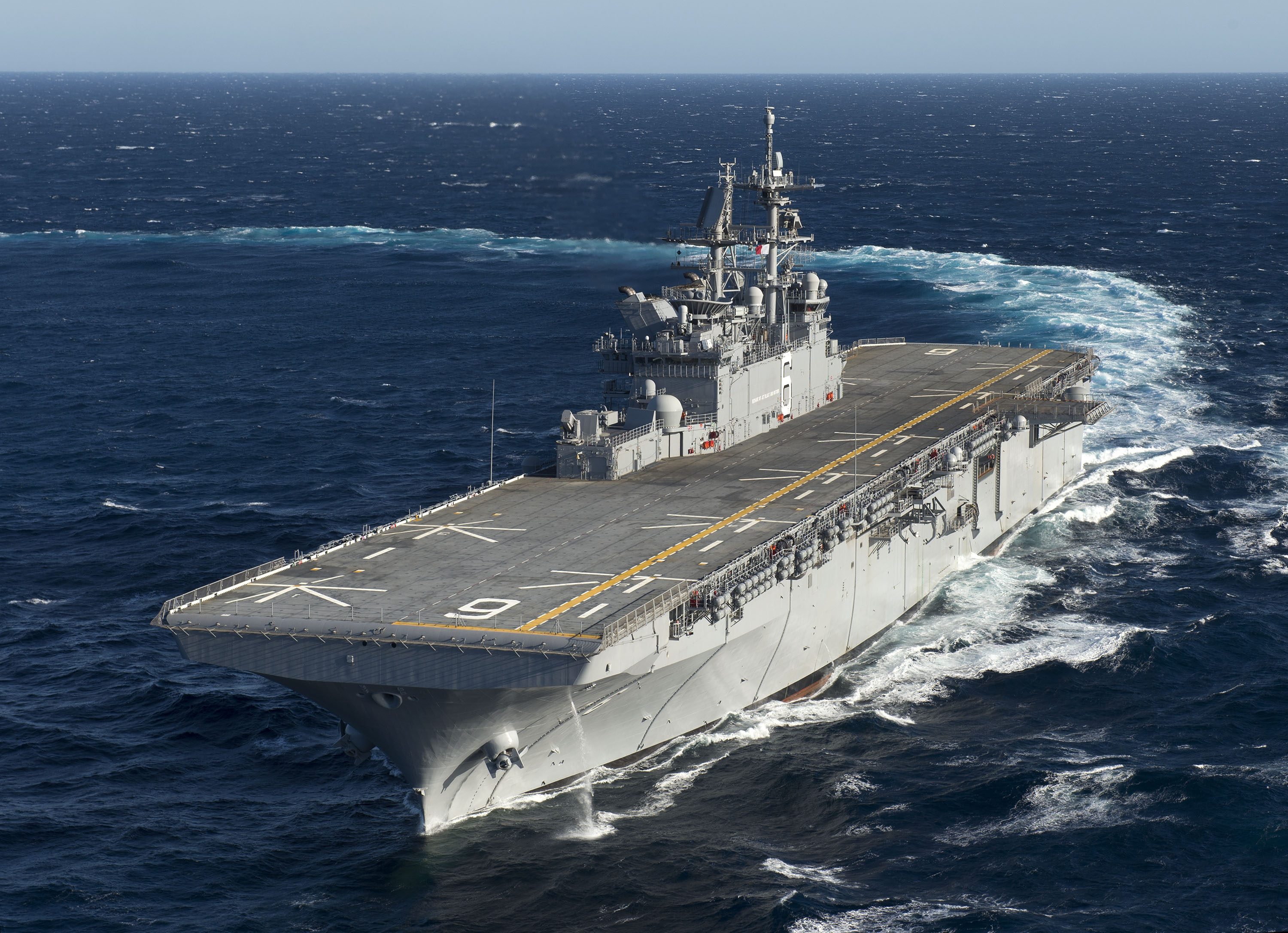Sourced : Popular Mechanics
By Kyle Mizokami
In his blueprint for increased defense spending released last week, Senator John McCain, head of the Senate Armed Services Committee, recommends building what he calls a high/low mix of aircraft carriers. The high end we already have. These are the Nimitz and now Ford-class of supercarriers. But what is the low end of the mix, and what would it look like? It would look like ships we have now.
Last week, Senator McCain released “Restoring American Power: Recommendations for the Fiscal Year 2018-2022 Defense Budget”. The Senator from Arizona endorsed growing the U.S. Navy to 355 ships, a number that the Chief of Naval Operations, the military head of the Navy, supports. But McCain doesn’t want all of the funds to go towards traditional big-deck aircraft carriers like the ones that we have now. McCain says:
“The Navy should also pursue a new “high/low mix” in its aircraft carrier fleet. Traditional nuclear-powered supercarriers remain necessary to deter and defeat near-peer competitors, but other day-to-day missions, such as power projection, sea lane control, close air support, or counterterrorism, can be achieved with a smaller, lower cost, conventionally powered aircraft carrier. Over the next five years, the Navy should begin transitioning from large deck amphibious ships into smaller aircraft carriers with the goal of delivering the first such ship in the mid-2030s.”
McCain is almost certainly talking about the America-class amphibious assault ship. The America class is 844 feet long and displaces 45,000 tons fully loaded. Designed to carry the better part of a Marine Expeditionary Unit, it has a full-length flight deck, aircraft elevators, and a large hangar to support aircraft.
The America class typically carries a mixture of Marine aircraft on cruises, including F-35B Joint Strike Fighters, AH-1Z attack helicopters, UH-1Y utility helicopters, V-22 Osprey tilt rotor transports, and CH-53E Sea Stallion heavy lift transports.
The America looks like a carrier, and for all intents and purposes it is a part-time carrier for the U.S. Marines.
The Navy could go one step further and actually make it a real carrier by building them to carry the Marine Corps’ version of the Joint Strike Fighter, the vertical takeoff and landing F-35B. The amphibious assault ships could be easily converted to carry up to 23 Navy F-35Bs at a time, or just under half as many fighter planes as a supercarrier.
Building such carriers would be an acknowledgement that the hulking Nimitz and Ford-class supercarriers are not the solution to every crisis. In big war situations that require large amounts of airpower—against Russia or China, for example—supercarriers are indispensable. While the likelihood of a big, conventional war has gone up in recent years, there are still existing conflicts, such as Syria, Iraq, and Libya, that could be serviced by a less capable America-class carrier.
These smaller, low-end carriers do come with tradeoffs. The small size and the lack of a full-length flight deck and aircraft launching catapults would make it incapable of hauling other aircraft that supercarriers carry, like the E-2C/D Hawkeye airborne early warning and control aircraft and EA-18G Growler electronic attack aircraft.
The lack of the former would restrict the carrier’s ability to detect distant threats and manage the battle in the air and the latter would make suppressing enemy air defenses more difficult. But those situations are more common in big wars, and for that we have the supercarriers. Smaller carriers could also not launch and recover near carrier-borne drones like the MQ-25 Stingray refueling and reconnaissance unmanned aerial vehicle.
Cost is another major issue that drives the argument. The first of the Ford-class carriers will cost an estimated $13 billion dollars. USS America, on the other hand, cost $3.4 billion. That’s a pretty good number for being able to field half as many aircraft, with the caveats mentioned above. You could buy three America carriers for one Ford.
Still, a force of America-class carriers might be more expensive to run on a daily basis just because of manpower costs: Ford has 4,660 crew overall. The three smaller carriers would have a total 3,600 crew members plus their air wing personnel, which would probably be at least another 500 or so each. That’s at least another 500 personnel manning the smaller carriers—which, incidentally, could be sent to three different trouble spots around the world.
Just like any other complicated issue, there are arguments both for and against a high/low mix of carriers. America can get by on an all-supercarrier force, and it could also live with a high/low mix. That having been said, unless the cost of supercarriers is brought under control we could be forced into a high/low mix of ships. It wouldn’t be a bad place to be.


